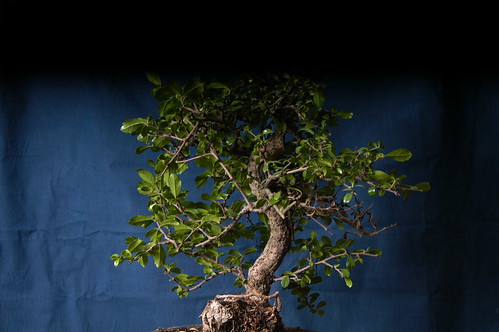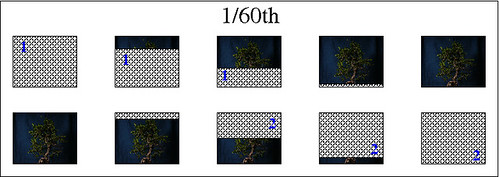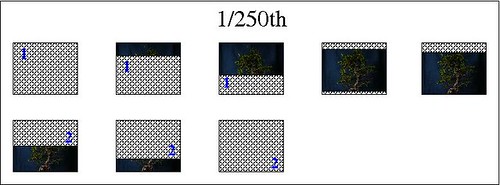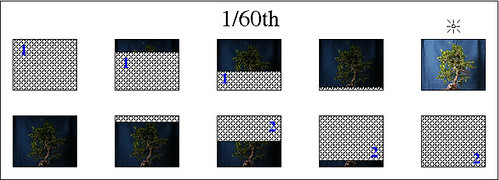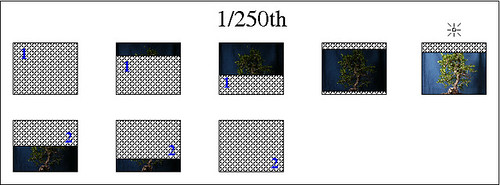Day 342
[reading: Dave Sim, "Cerebus"]
[Edit 7-Nov-2007: I've since found a couple of good explanations.]
In my photography course yesterday, I found myself explaining how flash sync speeds work. To my surprise, there doesn't seem to be an easily-googleable explanation online, so I though it might be worth writing up:
The flash sync speed for a camera is the fastest shutter speed you can set and still use flash. It varies from camera to camera: more recent and more expensive cameras are faster, older cameras are slower (and often have the sync speed helpfully marked in red on the speed dial). If you try to use a shutter speed that's faster than the sync speed you end up with pictures like this:
So what goes wrong?
The first thing to understand is how the camera's shutter works. If you could slow down time, you'd see a sequence like this:
There are two shutter curtains that pass down the frame from top to bottom. This first opens things up to light, and the second closes it again. As the shutter speed gets faster, we reach a point where the shutter never completely opens during the sequence:
Each area of the frame is exposed for the same amount of time (because both shutter curtains move at the same speed), but the top and bottom parts of the frame aren't exposed at the same time.
The second thing to realize is that flash is very fast—much faster than the fastest shutter speed on the camera, maybe 1/16,000 to 1/50,000 of a second. Revisiting our two sequence diagrams:
At this speed, everything is fine. The flash triggers and illuminates the whole of the image. At the faster speed, problems arise:
If we think of the flash as being effectively instantaneous, then because there is no moment where the whole of the frame is exposed at once, there's no moment when the flash could fire and illuminate the whole of the scene. This also explains the sort of problems that occur in the final image:
- Dark bar at the top of the frame (illustrated above): the camera has triggered the flash when the first shutter curtain reaches the bottom of the frame, but the second curtain is already obscuring the top of the image.
- Dark bar at the bottom of the frame: the camera has triggered the flash when the second shutter curtain is about to start at the top of the frame, but the first curtain has not yet exposed the whole of the bottom of the image.
And in other news, we've now had our first directors meeting for the new company.
